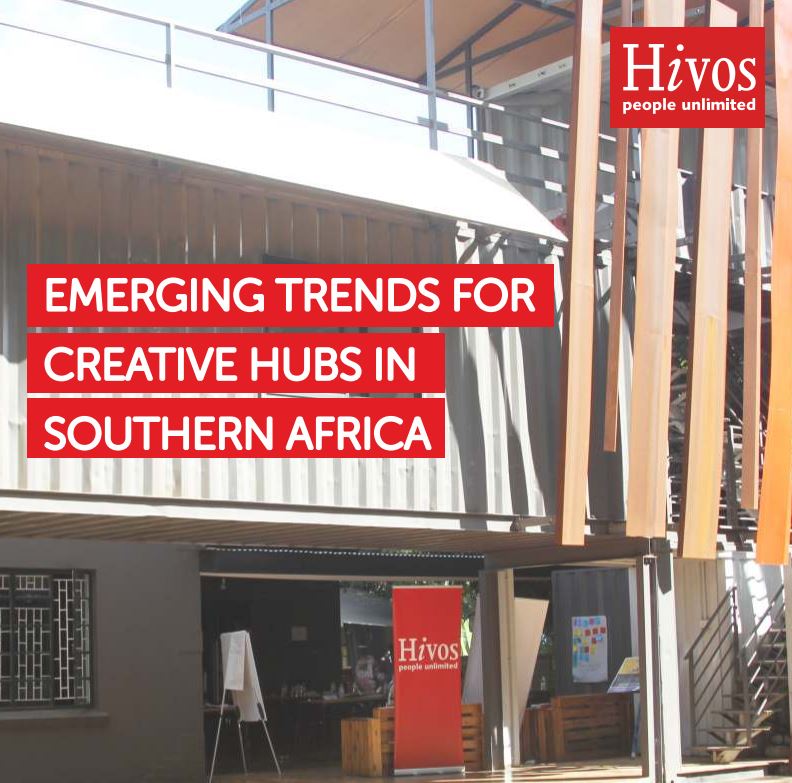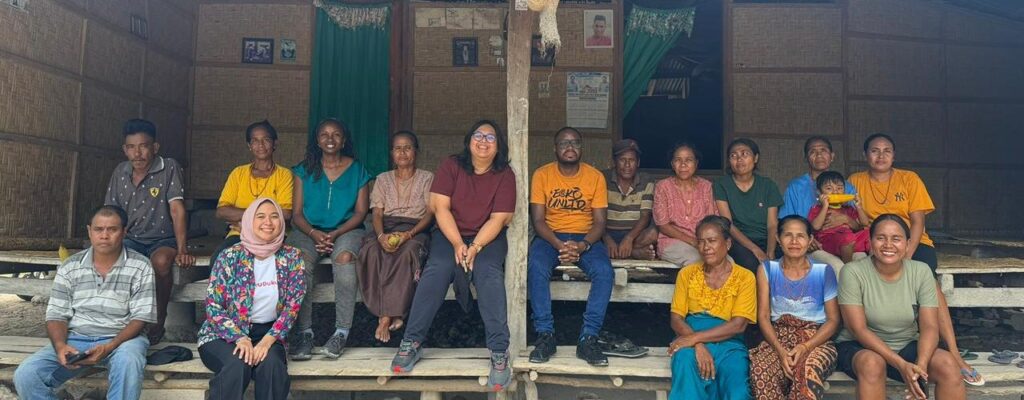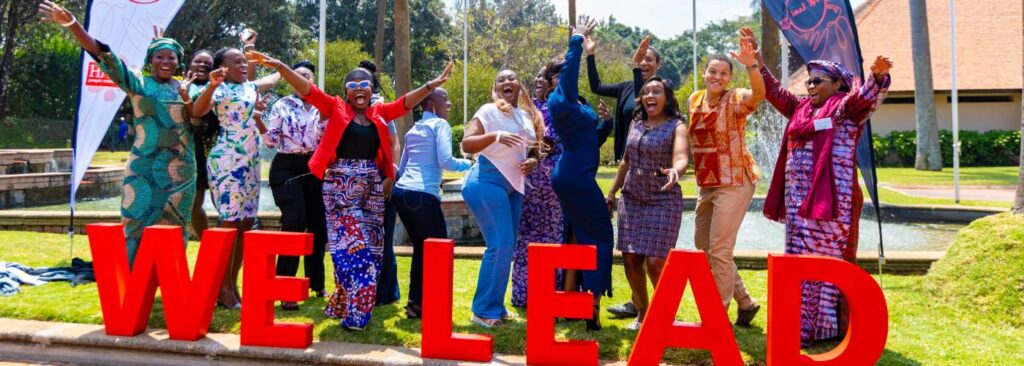Hivos Southern Africa conducted a baseline study to look at the state of creative spaces in Southern Africa (namely Malawi, South Africa, Zambia and Zimbabwe). The main aim of the study was to enable Hivos to understand more about the operations and challenges of creative hub spaces in Southern Africa.
In addition, the study aimed to investigate the extent to which creative hubs for changemakers (men and women) in the three subject countries affect free expression, civic engagement and entrepreneurship.
As a result, the research focuses on creative spaces mostly run and frequented by young people in Southern Africa. These spaces are not limited to digital start-ups but include cultural arts centres, media hubs and critical content creation hubs.
Through an online-administered questionnaire, the baseline survey sought to find out the ownership and location dynamics, legal status, societal problems which are being solved, challenges encountered, sources of funding and disaggregated data on the numbers of people who frequent creative hubs in Southern Africa.
A Summary of the Research Methodology
The methodology of the survey included the distribution of 30 questionnaires sent out via email to a purposively sampled list of conveners of creative hubs in Southern Africa and 14 were returned (a response rate of 46.6%).
A critical desktop research was also undertaken on the basis of readily available literature and websites of existent hubs in the Southern African region. The final stage of the survey was the convening of a one-day Creative Hub Think Tank workshop in Harare, Zimbabwe under the global theme of Room of Open Minds (R.O.O.M) for hub convenors from Malawi, South Africa, Zambia and Zimbabwe.
Using the ‘World Café’ workshop methodology, the objective of the one-day think tank was for creative hub convenors and communities to reflect on the operating environment, challenges, opportunities and priorities for creative hubs and spaces in the region.
Some the highlights of the findings of the combined survey ( questionnaire, desktop research and creative hub think tank meeting) are:
- Creative hubs in Southern Africa are mostly frequented by young people.
- Creative hubs in Southern Africa focus on three thematic issues: civic engagement, creative arts and entrepreneurship.
- Most creative hubs are based in urban settings and closer to city centers.
- There is a general gender imbalance of usage of creative hubs with male users being significantly higher than female users.
- Creative hubs in Southern Africa face serious sustainability challenges as they relate to lack of financial resources and lack of human resource and technical capacities to find new solutions for greater effectiveness.
This report also outlines concrete recommendations as they emerged for the creative hub think tank meeting, on how creative spaces in Malawi, South Africa, Zambia and Zimbabwe as well as the region can become sustainable spaces for free expression, civic engagement and critical content creation.
Brief Background to Creative Hubs in Southern Africa
Creative hubs and spaces are an important emerging trend for young changemakers not only globally but also in the Southern African region. In Malawi, South Africa, Zambia and Zimbabwe budding hubs are proving to be potential enablers of free expression, civic engagement and social entrepreneurship for changemakers (men and women).
In recognising this, Hivos Southern Africa engaged some creative hubs in the three aforementioned countries of the region in order to establish their existent and primary challenges with regards the key reasons for their existence, ownership and sustainability models as well as any other key challenges that they may be dealing with.
The nature of the hubs engaged ranged from those that work on the following under the overall theme of ‘free expression in Southern Africa’:
- Civic engagement
- Critical content creation and free expression
- Creative arts
- Social entrepreneurship and innovation
The report therefore outlines experiences, challenges, and priorities and learning points of creative hub convenors in Malawi, South Africa, Zambia and Zimbabwe.
And through the learning processes of the initial survey of hubs and the think tank meeting this report seeks ways of finding the right direction as to “what is working” and ‘what needs to be worked on’ to ensure creative hubs enhance free expression and safe spaces for change-makers in the region.
And through the learning processes of the initial survey of hubs and the think tank meeting this report seeks ways of finding the right direction as to “what is working” and ‘what needs to be worked on’ to ensure creative hubs enhance free expression and safe spaces for change-makers in the region.
Key Recommendations
The key recommendations that emerged from the meeting included pointers as to how to resolve challenges of sustainability, capacity building, expanding target audience and users, creating networks of hubs, ensuring a free and secure environment, creating a gender sensitive environment and innovative thinking.
Sustainability: On sustainability, participating hubs agreed that most hubs are reliant on donor funding, and have not established a sustainable means of financing their continued existence. It was established that Creative hubs need to make social investments such as bank loans. Independent funding was also mentioned as key in ensuring that hubs are autonomous and free from undue influence if the hubs are to make a progressive impact on society
Capacity Building: With regards to capacity building, participating hubs agreed that skills development can enhance the development of a hub’s performance. Hub convenors need to continuously build their capacity by developing relevant skills that go with the trends and times. Skills set include financial literacy and digital skills development. Developing trending skills can capacitate a hub to maintain its existence and improve its significance and impact.
Expanding target audiences and users: From the think tank meeting and survey, it was established that most hubs are located in the urban centre. According to the participating hubs, there is need to expand target audience and users of hubs into the peri-urban and rural spheres. Affiliate hubs can be created and different communication platforms can be used to this end. The Afro barometer survey of 2017 states that the widest means of information dissemination for the rural population is the radio. Media hubs can utilise radio to distribute their content and raise public awareness of their work.
Creating networks of hubs: Participant Hubs talked about how they ought to leverage on their counterparts’ different specialities. Different hubs can network and work as a sum of their parts, interlinking and interconnecting for maximum benefits. By integrating the specialities of a digital start-up hub, cultural arts cente, media hub and critical content creation hub, convenors can actually improve the impact of the hubs and create sustainable free creative spaces with maximised civic engagement.
Ensuring a free, safe and secure hub environment: As identified by the survey participating hubs, need to foster free, safe and safe spaces for different groups of young change makers. These change makers can be involved in civic engagement, entrepreneurship of have a focus on sexual and reproductive health rights. They however must all feel safe and secure in the spaces created for them by hubs.
A gender sensitive environment: One of the recommendations that the participants came up with was the issue of creating a gender sensitive environment which also respects sexual reproductive health rights, for the sustainability of a freely expressive and civic engaging creative hub.
Innovativeness: This survey points out how Innovation is key to sustainable existence of any organisation. With the changing trends and times, hubs need to forecast trends and come up with new ideas to attract more users and finance their existence.




